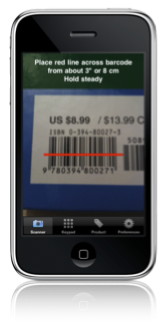
CommScore have recently releases their
first comparative report on mobile usage in Japan, United States and Europe and it makes for interesting reading.
They examined multiple dimensions of mobile usage to get a comparative look on how consumers interact with mobile media across various geographic markets.
In particular, the focus of the report was on content consumption, demographic comparisons and the top social networking brands across markets. There are significant geographic differences as the key findings below indicate.
Mobile users in Japan were the “most connected” of the three markets, with more than 75 percent using connected media (browsed, accessed applications or downloaded content) in June, compared to 43.7 percent in the U.S. and 38.5 percent in Europe.
Japanese mobile users also displayed the strongest usage of both applications and browsers with 59.3 percent of the entire mobile population accessing their browsers in June and 42.3 percent accessing applications. Comparatively 34.0 percent of mobile users in the U.S. and 25.8 percent in Europe used their mobile browsers, with 31.1 percent in the U.S. and 24.9 percent in Europe accessing applications.
Messaging methods also varied with Europeans displaying the strongest use of text messaging with 81.7 percent sending a text message in June, compared to 66.8 percent in the U.S. and just 40.1 percent in Japan. Japanese users exhibited the highest reach in the email category at 54 percent, while consumers in the U.S. were most likely to use instant messaging services on their mobile (17.2 percent).
Social networking/blogs reached the greatest percentage of mobile users in the U.S. at 21.3 percent, followed by Japan at 17.0 percent and Europe at 14.7 percent. Japanese users were most likely to capture photos (63.0 percent) and watch TV/video (22.0 percent) on their mobiles, while Europeans were most likely to listen to music (24.2 percent) and play games (24.1 percent).
Across markets, local and global brands showed varying levels of adoption by mobile audiences. In all three markets, the top mobile social media brand mirrored the top PC-based social networking brand with Facebook leading in the U.S. and Europe and
Mixi leading in Japan. Local brands Gree and Mobage Town were the #2 and #4 most accessed social networking brands in Japan. Twitter was the only brand to be ranked in the top four in all markets.
Source: comScore
Mobile Platform Growth
Google's Android continues to take significant market share from other smartphone platforms, particularly in the US market as this chart shows.
Source: comScore
So where to put your money - app development or a website for mobile?
EConsultancy still believes that the
web for mobile commerce is more effective than apps. and an ideal first step for those contemplating dipping a digital toe into the ecommerce pond. The ten points they make in favour of mobile web over apps are:
 |
| pic2shop |
- Greater reach
A mobile website appeals to the broadest possible audience without having to design multiple apps.
- Growth of Android
Visits from Android devices have increased for retailers and a mobile website is the best way to appeal to both Android and iPhone users.
- Findability
If you are using apps you have to search for them and download them to a phone whereas users can come across your mobile optimised site through mobile search.
- App Promotion
If you go the app route how does your rise above the pack? Maybe the big enterprises will stand out but smaller retailers will struggle to be found amonst nearly 50 different app stores and over 400,000 apps in the top three stores
- The best features of apps can now be recreated on mobile web sites
The extra functionality edge that apps can provide such as barcode scanning, detecting users' locations for store locators, and augmented reality are now being acheived on mobile web sites
- Links
On the mobile web you can always email or refer a link and any browser can open it. You can't link to and from an app.
- No approval process required
Apps go through an approval processbefore release and any subsequent readjustments. Mobile sites allow you to change your site design and update without any such restrictions.
- HTML5
The recently released Rightmove mobile website uses HTML5 and manages to recreate the features of its iPhone app making it difficult to tell the difference between the two. Mobile sites can work offline with local storage and mobile browsers are at the leading edge of HTML5
- Return On Investment
Mobile web is a better solution for small businesses as a mobile website to cover all bases makes more sense financially
Big retailers in the Uk such as Marks and Spencer are reaping the benefits of investing in mobile web sites.
Their m-web site which was launched in May has attracted 1.2million visitors, with more than 10million page views and (most importantly) 13,000 orders from the site.
Sienne Veit, Social and Mobile Commerce Development Manager, Marks & Spencer, said in
a recent interview:
" For M&S the m-commerce site is all about getting product quickly and easily to consumers via mobile and paying for their product on their mobile device.
Our aim is to integrate mobile as a channel to stand alongside web, phone and stops as part of ‘Shop Your Way’, to increase basket size and drive sales.
We’ve also incorporated a customer feedback facility to enable customer review’s, we’ve also given consumers a choice of delivery method.”






